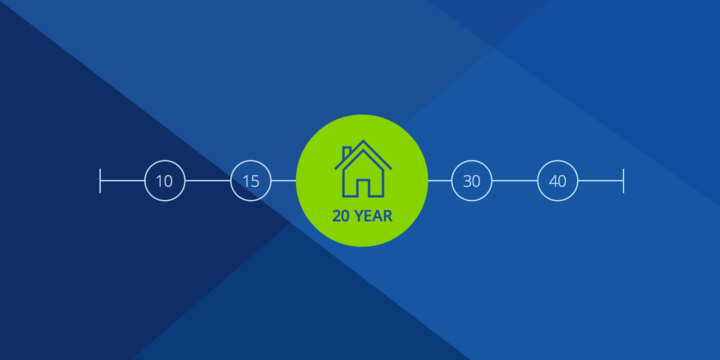Mortgage APR vs Interest Rate: How to Compare
Ever wonder why mortgage loans include an APR and interest rate? Here's the main difference.


Written by Alycia Lucio on September 26, 2024
When you take out a mortgage, you’re agreeing to repay the amount you borrowed plus the interest the lender charges you to borrow that amount. The lender also charges fees for giving you the loan. These fees are represented as interest and APR. The interest rate is what you’ll pay on the borrowed amount (or principal). The annual percentage rate (APR) reflects the total cost of taking out the mortgage once fees are factored in.
Understanding the difference between APR and interest rate could save you thousands of dollars over the life of your loan.
What is the difference between APR and interest rate?
Interest is the cost of borrowing money from a lender. APR is a more comprehensive measure of your total borrowing costs. APR includes your mortgage interest in addition to the following applicable fees:
- Mortgage insurance
- Origination fees
- Mortgage broker fees, if applicable
- Mortgage discount points, if purchased
Both mortgage APR and interest are expressed as a percentage of your principal loan balance. APR is the yearly cost of your mortgage, and interest is recalculated each month based on the remaining principal balance. APR is often referred to as the actual cost of your mortgage, making it the best way to compare your borrowing costs when choosing a lender.
As of 1968, the Truth in Lending Act (TILA) legally requires mortgage lenders to disclose any information regarding the charges and fees associated with your home loan, including mortgage APR and interest.
How to compare interest rate vs APR on a mortgage
When comparing lenders, you’ll want to consider both the interest rate and APR they’re offering. Let’s say Lender 1 offers you a lower interest rate, but has much higher origination fees and requires you to purchase discount points. Lender 2 offers a higher interest rate, but with fewer lending fees, and isn’t offering or encouraging discount points. In this scenario, Lender 1 offers a lower APR than Lender 2, resulting in less interest over the life of the loan — despite the difference in interest rates.
Here’s the comparison of APR vs interest rate on a $300,000, 30-year fixed-rate mortgage from both lenders:
| Lender 1 | Lender 2 | |
|---|---|---|
| Interest rate | 6.8% | 7% |
| Lender fees | $9,000 | $3,000 |
| APR | 7.092% | 7.099% |
| Monthly payment | $1,956 | $1,996 |
| Total interest | $404,075 | $418,524 |
How is mortgage APR calculated?
Mortgage APR is calculated annually and divided into monthly payments. Like mortgage interest, APR is expressed as a percentage of the loan amount. However, it accounts for all the costs involved in a mortgage, including interest.
While your lender will do the math for you, you can estimate your mortgage APR by adding your interest rate and fees associated with the loan, and dividing that number by the sum of your principal balance. The result is then divided by the number of days within your loan term, multiplied by 365, and again by 100 to get a percentage.
The formula for APR looks like this:
APR = (Total Interest Paid + Total Fees / Principal Loan Amount) / Number of Days in Loan Term) x 365 x 100
So, if you get a $300,000 mortgage with a 6.25% interest rate and pay $7,000 in fees, that’s:
(((6.25 + 7,000) / 300,000) x 365) x 100 = 6.47% APR
Depending on the terms of your loan, your mortgage APR will likely vary monthly or annually if you have an adjustable-rate mortgage (ARM). This is because the APR on an ARM will change to reflect the current interest rate at the time of recalculation. The APR on a fixed-rate mortgage will remain the same throughout the life of the loan.
How is mortgage interest calculated?
Mortgage interest rates are calculated using complex formulas based on current market conditions, lender criteria, inflation, and your individual financial factors. Unlike mortgage APR, which accounts for additional mortgage costs, your interest rate has more to do with many factors outside your control.
Lenders typically use the federal funds rate set by the U.S. Federal Reserve to establish their prime rate for mortgage interest. The prime rate is a benchmark financial institutions use to determine interest rates for all types of mortgage loans. From there, lenders will look at your individual financial factors, including:
- Credit report and credit score
- Debt-to-income ratio (DTI)
- Loan-to-value ratio (LTV)
- Down payment amount
- Loan type and terms
Viewing your estimated APR is the best way to compare lenders and understand your total cost of borrowing. See what type of rates you may qualify for by pre-qualifying with us at Zillow Home Loans today.*
*An equal housing lender. NMLS #10287
How much home can you afford?
At Zillow Home Loans, we can pre-qualify you in as little as 5 minutes, with no impact to your credit score.
Zillow Home Loans, NMLS # 10287. Equal Housing Lender
Get pre-qualifiedHow much home can you afford?
See what's in reach with low down payment options, no hidden fees and step-by-step guidance from us at
Zillow Home Loans.
Zillow Home Loans, NMLS # 10287. Equal Housing Lender
Calculate your BuyAbility℠
Related Articles
Get a mortgage with Zillow Home Loans
Go from dreaming to owning with low down payment options, competitive rates and no hidden fees. A dedicated loan officer will guide you until you have your keys in hand.

Zillow Home Loans, NMLS #10287. Equal Housing Lender.



